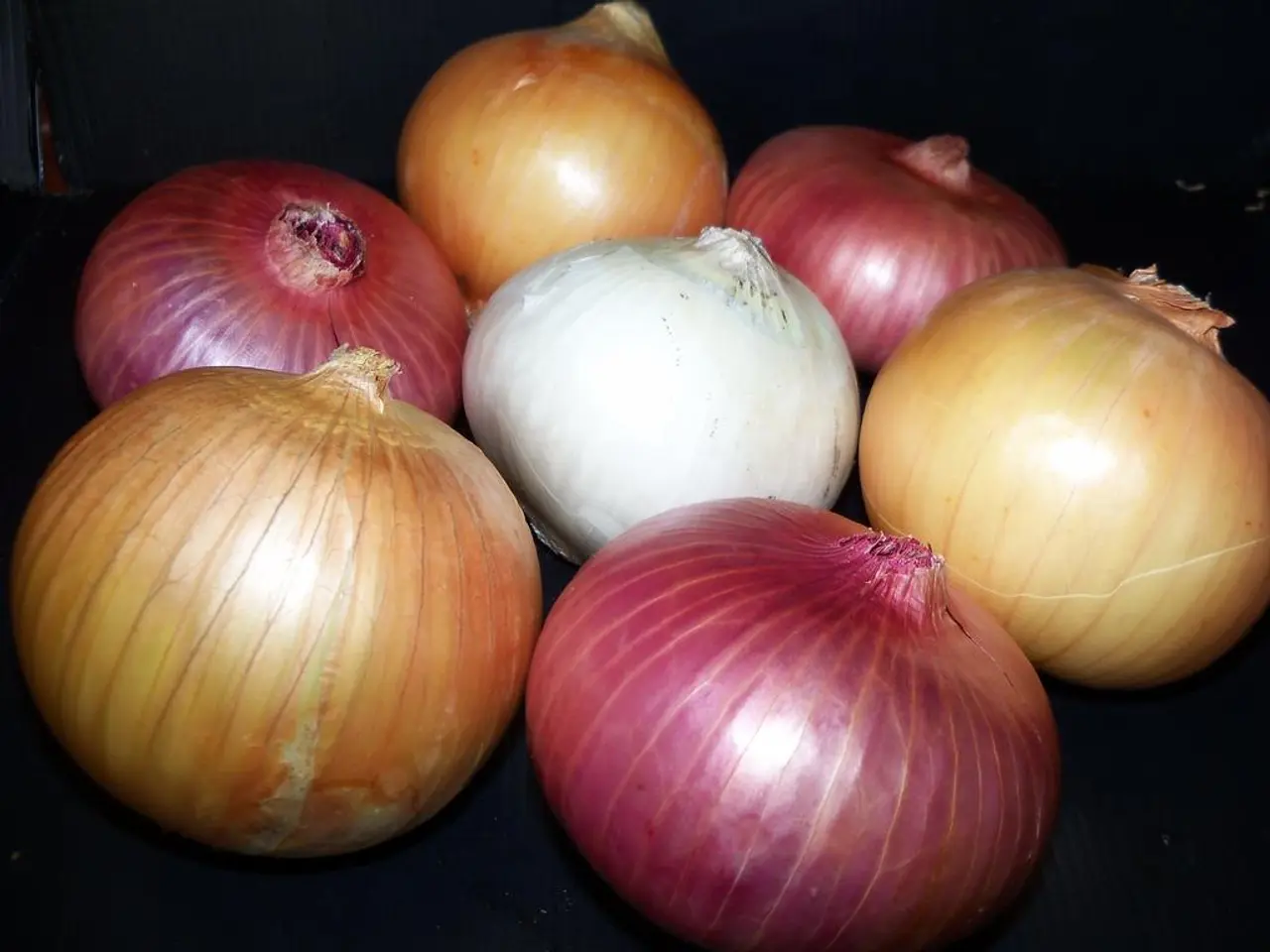Garlic Planting Schedule in Zone 6a: Ideal Timing and Suggestions for a Successful Harvest
Growing garlic in Zone 6A can be a rewarding experience for gardeners, as long as the right steps are followed. Here's a detailed guide on planting, cultivating, and harvesting garlic in this climate.
Planting (Fall, 2–4 weeks before ground freezes)
The key to successful garlic growth in Zone 6A lies in choosing the right variety. Hardneck garlic, such as Rocambole, is preferred due to its robust flavour and easier peeling. Prepare the planting bed by loosening the soil 6–8 inches deep and mixing in ample compost to improve nutrients and drainage. Separate seed garlic bulbs into individual cloves, keeping their papery skins intact. Plant each clove pointy side up about 2 inches deep, spaced 4–6 inches apart in rows 8–12 inches apart. After planting, mulch heavily (3–6 inches of straw or leaves) to protect the cloves through winter. Water lightly if the soil is dry after planting, but then let the cloves overwinter dormant.
Cultivating (Winter through Early Summer)
Leave the garlic undisturbed during winter; the cold encourages bulb development. In spring, gradually remove some mulch as temperatures warm. Fertilize with compost tea or fish emulsion to promote growth. Water regularly during early summer as the plant grows. Harvest garlic scapes (flower stalks) when they start to curl, about 2–3 weeks before bulb harvest. Removing the scapes helps the bulbs grow larger.
Harvesting (Mid to Late Summer)
Harvest garlic when 50% to 75% of the leaves have yellowed or browned; this timing ensures proper bulb maturation and storage life. Pull up garlic by grasping the stalk near the base; avoid yanking that breaks stems—in compact soil, loosen gently with a fork to avoid damaging bulbs. Brush off soil gently but do not scrub bulbs to preserve protective papery skins. Cure garlic in a dry, well-ventilated area for several weeks before storage to improve shelf life.
These steps align well with the climate of Zone 6A and hardneck garlic requirements, optimizing for winter survival, strong bulb growth, and successful harvest.
Remember, garlic needs plenty of sunlight to thrive, so it should be planted in sunny locations. Garlic cloves should be spaced about 4 to 6 inches apart and covered with 2 inches of soil for optimal root system establishment. Using compost, well-rotted manure, and balanced fertilizers enriches the soil and supports robust garlic growth. Planting garlic in raised beds can provide better drainage and root development. Healthy plants start with clean seed stock; sourcing garlic cloves from reputable suppliers is essential to avoid introducing diseases into the garden.
Avoid waterlogged soil to prevent rot when planting garlic. Lower leaves turning yellow and starting to die back typically indicate it's time to harvest garlic, usually in mid-May to early July. Garlic needs consistent moisture during its initial growth phase, but overwatering can lead to root rot. Garlic thrives in well-drained soil rich in organic matter, with a pH between 6.0 and 8.0.
In Zone 6A, the best time to plant garlic is between October and December, before the ground freezes. In Zone 6A, sudden cold snaps can be mitigated by mulching and ensuring the plants are well-protected from frost. Straw or leaf mulch helps retain soil moisture, suppress weeds, and prevent soil erosion. Thrips and white rot are common pests and diseases affecting garlic; regular inspection, natural pest control methods like neem oil, and maintaining a weed-free garden help prevent infestations. A final tip is to cover planted cloves with a 2-inch layer of mulch to protect against winter chills and retain soil moisture.
Glen, a gardening expert with over 15 years of experience in garden maintenance, design, and landscaping services, recommends these steps for growing garlic in Zone 6A. Happy gardening!
- Embracing hardneck garlic varieties like Rocambole for their flavor and easy peeling, combine their planting with a well-prepared home-and-garden plot of loosened soil enriched with compost for optimal lifestyle gains.
- In summer's mid to late phase, after about 50% to 75% of the leaves have yellowed or browned on your Zone 6A garlic plants, follow Glen's expert advice and carefully harvest them by avoiding yanking the stems, curing the bulbs for improved shelf life, and adjusting your home-and-garden activities accordingly.




